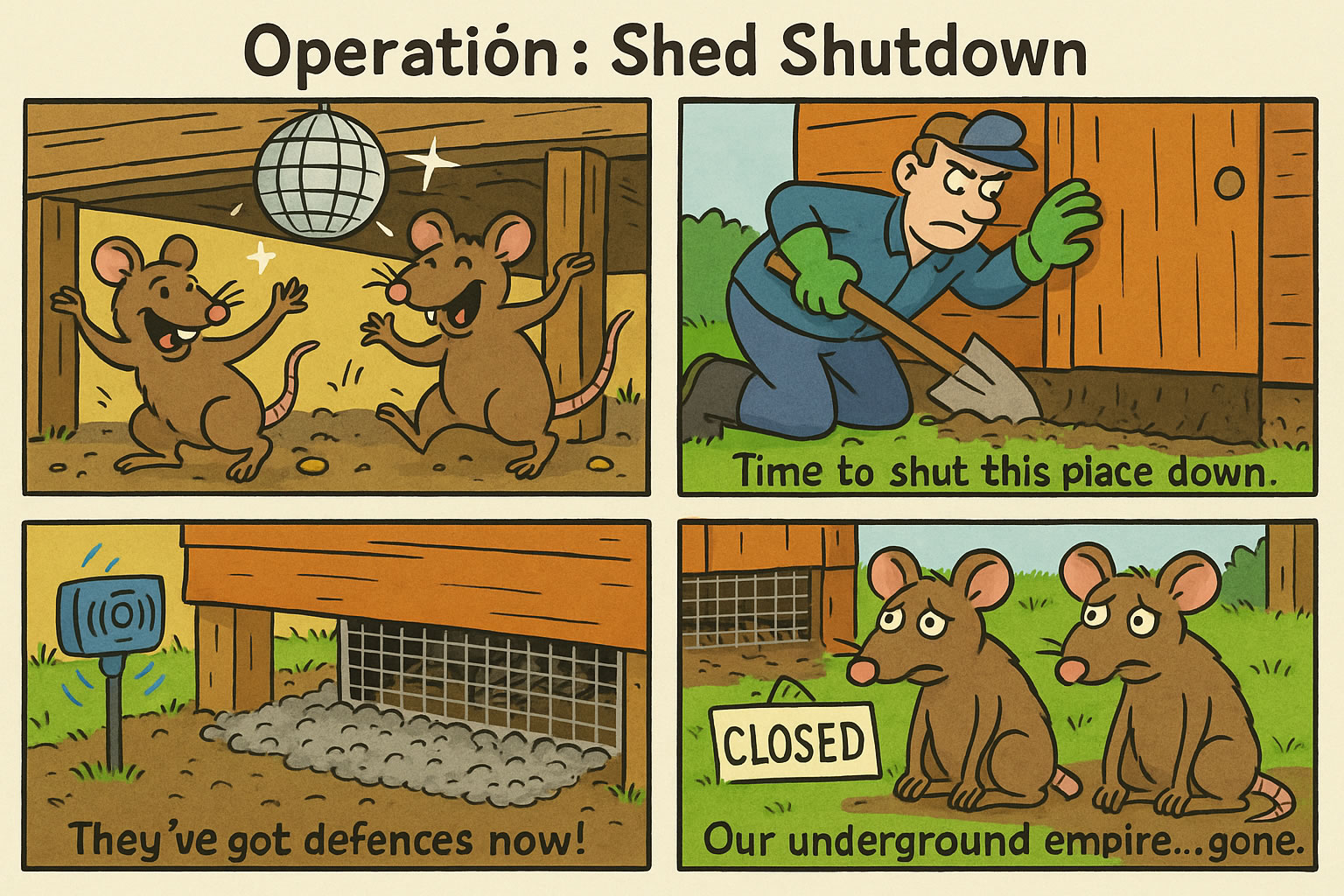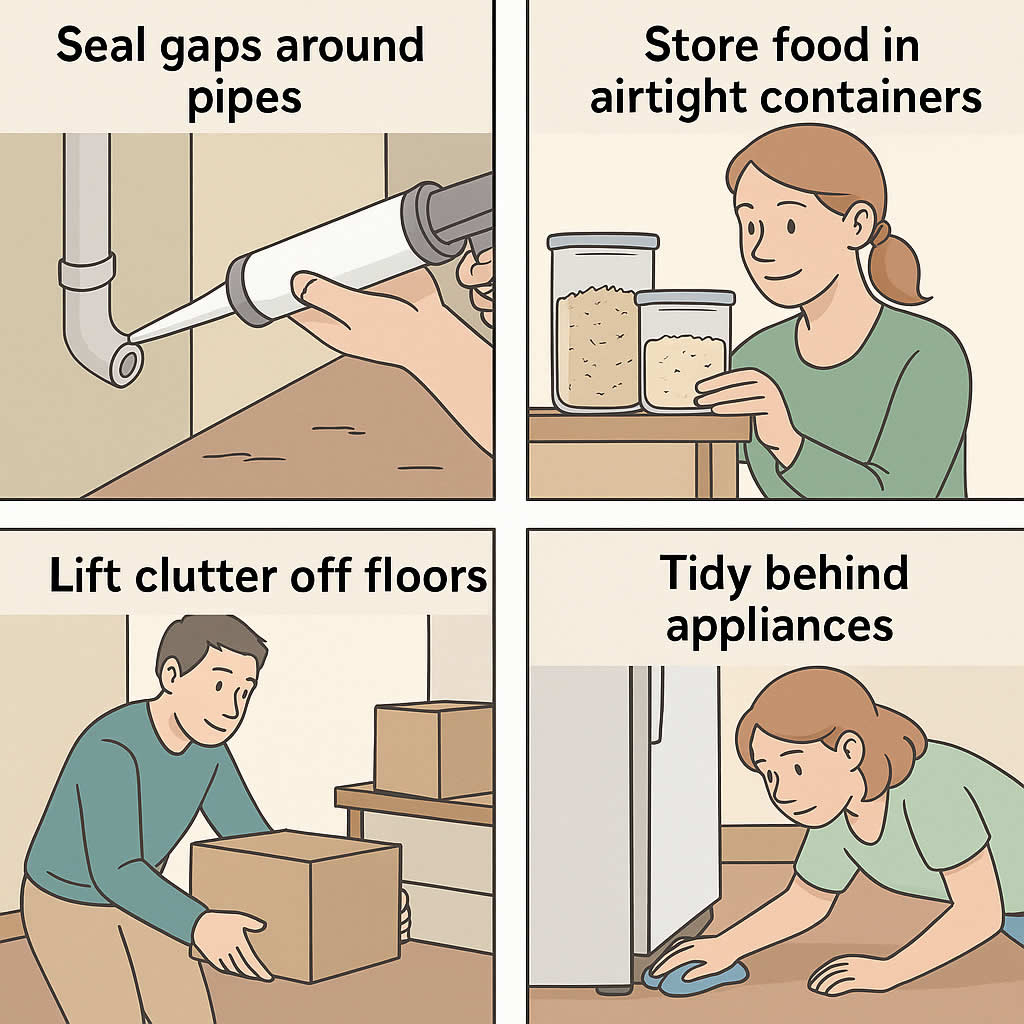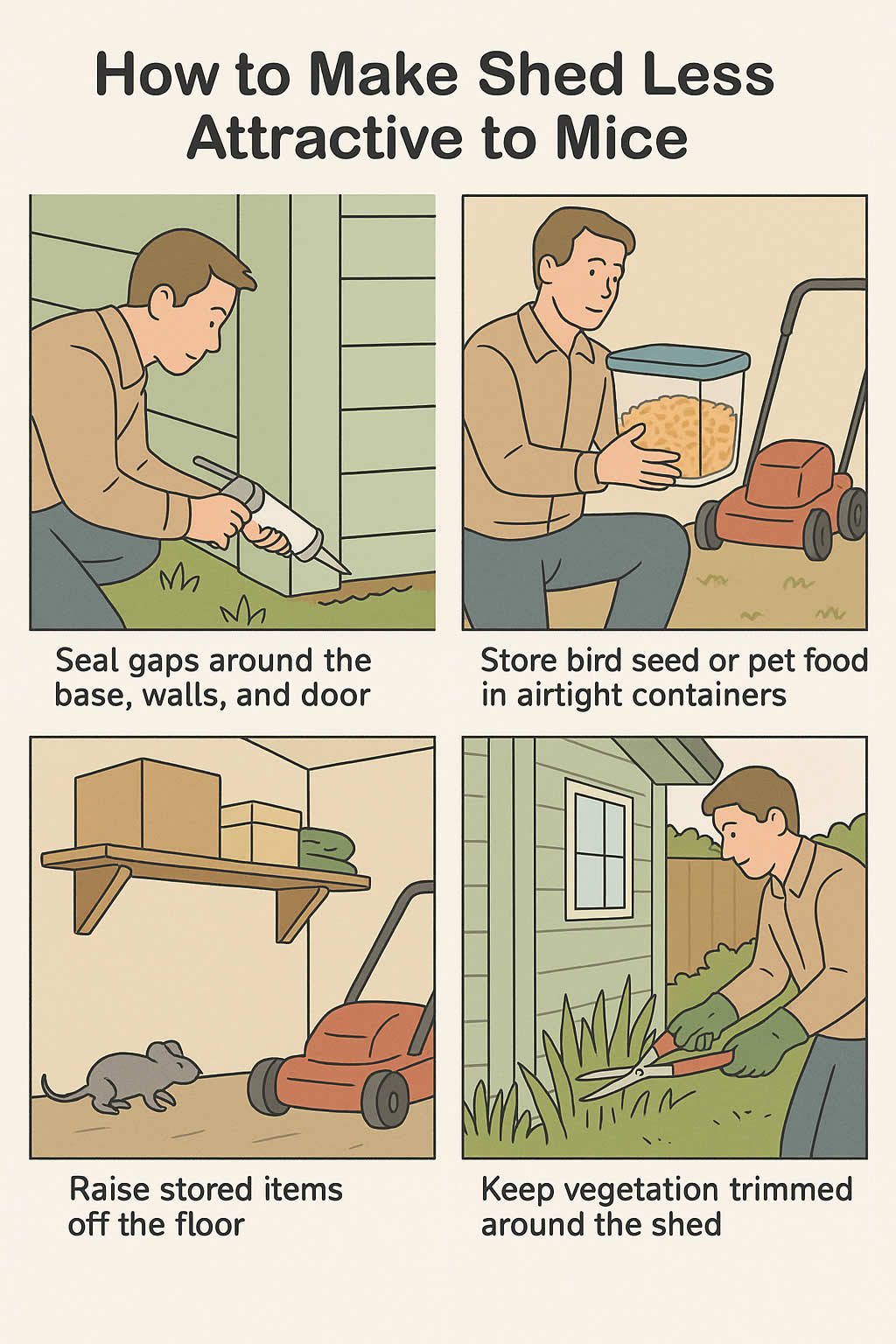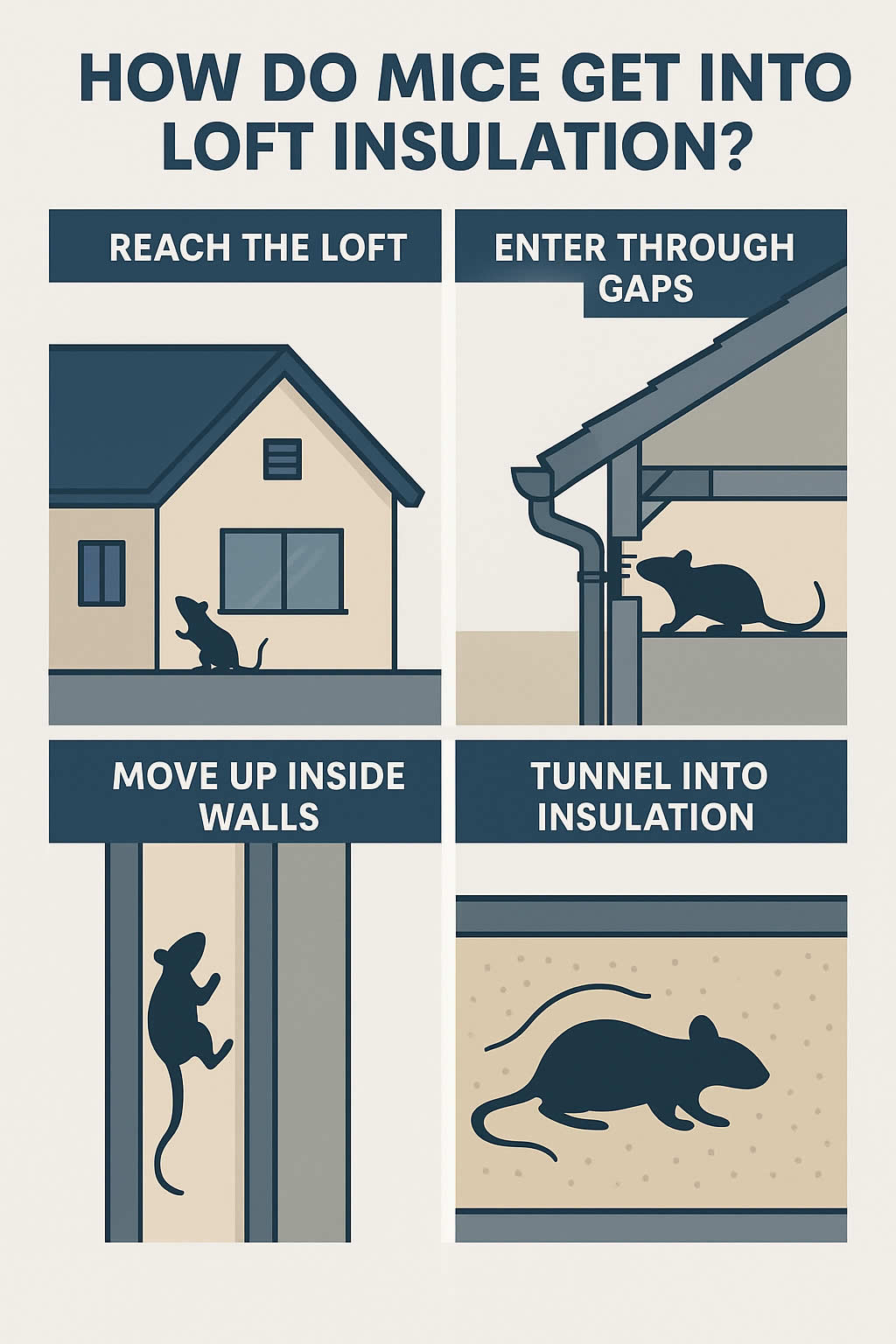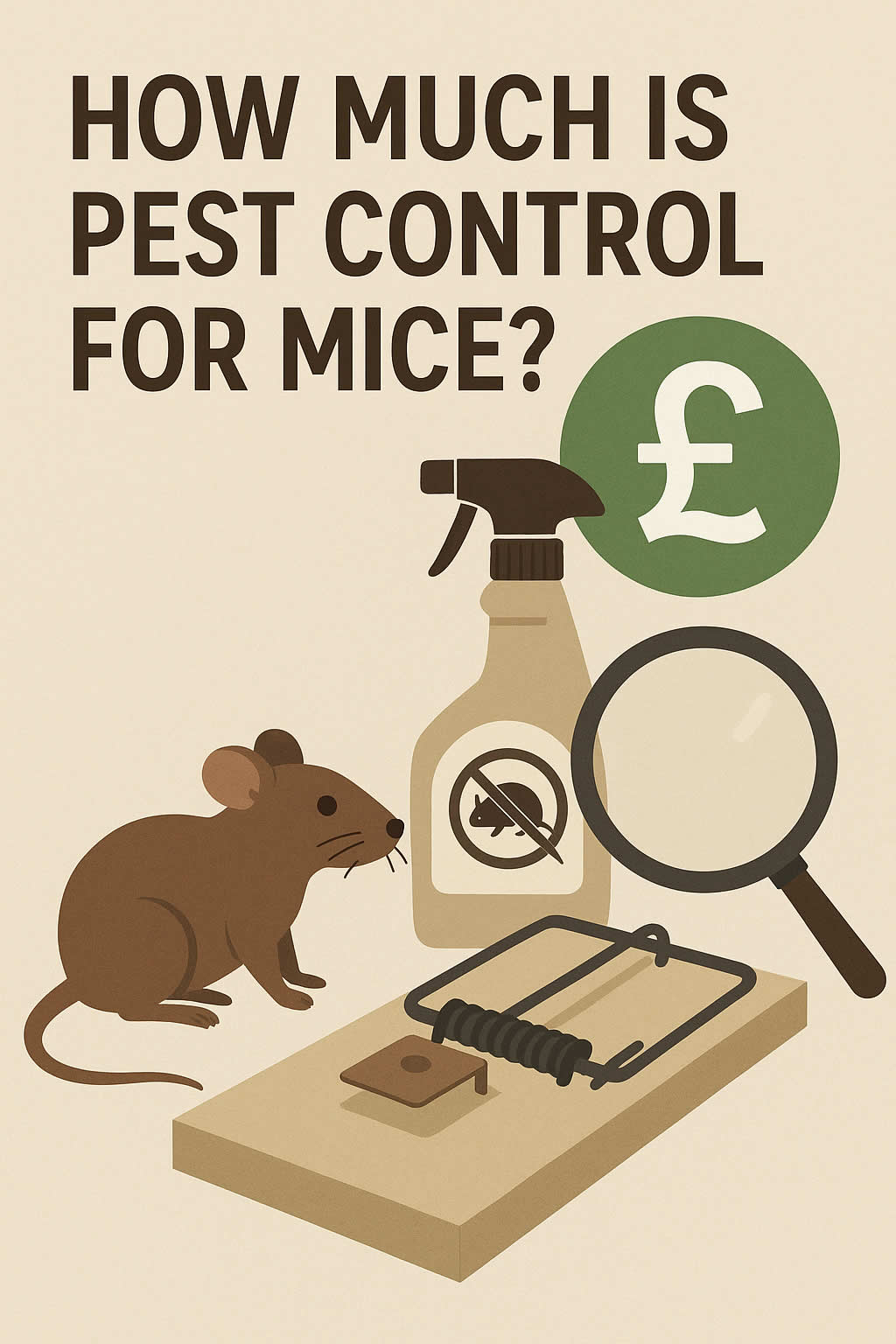Related Queries
ToggleRats can be a nuisance, especially when they decide to take up residence under your shed. Not only do they pose a risk to your property, but they can also threaten your health and the health of your pets.
Fortunately, there are effective strategies you can employ to evict these unwelcome guests.
Understanding the Problem
Why Rats Choose Your Shed
Rats are opportunistic creatures that seek warmth, shelter, and food. Your shed can provide all these essentials, making it an ideal nesting spot. Common reasons for rat infestations include:
- Food Sources: Open bags of pet food, birdseed, or any organic waste can attract rats.
- Shelter: Sheds often have dark, undisturbed corners that are perfect for nesting.
- Access Points: Small gaps and holes can serve as entry points for rats looking for a cosy place to settle.
Recognising these factors is the first step toward effective rat control.
Identifying Signs of Infestation
Before taking action, it’s crucial to confirm the presence of rats. Look for signs such as:
- Droppings: Rat droppings are typically dark and cylindrical, about 1-2 cm long.
- Gnaw Marks: Check for chew marks on wooden structures, boxes, or wires.
- Nests: Shredded materials like paper or fabric can indicate nesting.
- Footprints: If you see tracks in dust or soil, this could be a sign of rat activity.
Once you’ve identified the problem, it’s time to take action.
Seal Entry Points
Inspect Your Shed
Start by thoroughly inspecting your shed for any potential entry points. Rats can squeeze through surprisingly small gaps, so look for:
- Holes in the Walls: Check for cracks or holes in the wood or siding.
- Gaps Around Doors: Ensure that doors close tightly and seal any gaps.
- Vents: Cover vents with mesh or screens to prevent entry.
Effective Sealing Techniques
To effectively seal entry points, consider the following materials:
- Steel Wool: This is a great option for filling small gaps, as rats cannot chew through it.
- Caulk: Use caulk to seal cracks and gaps around windows and doors.
- Hardware Cloth: For larger openings, cover them with hardware cloth or metal mesh to create a barrier.
By sealing these entry points, you reduce the likelihood of rats returning to your shed.
Eliminate Food Sources
Clean Up Regularly
One of the most effective ways to deter rats is to eliminate their food sources. Follow these steps:
- Store Food Properly: Keep all food items, including pet food and birdseed, in airtight containers made of metal or thick plastic.
- Remove Debris: Clear away any organic waste, such as fallen fruit or vegetable scraps, that may attract rats.
- Secure Garbage: Ensure that your rubbish bins are tightly sealed and emptied regularly.
Maintain a Neat Environment
A clean and tidy shed is less inviting to rats. Implement these cleaning habits:
- Regular Sweeping: Sweep the shed floor to remove crumbs and debris.
- Organise Tools: Store tools and materials in sealed containers to avoid creating hiding spots.
- Dispose of Unused Items: Get rid of old boxes or materials that may accumulate dust and debris.
By maintaining a clean environment, you can significantly reduce the chances of a rat infestation.
Use Natural Deterrents
Essential Oils
Natural repellents can be an effective way to deter rats without the use of harmful chemicals. Consider using essential oils such as:
- Peppermint Oil: Rats dislike the strong smell of peppermint. Soak cotton balls in peppermint oil and place them in areas where you suspect rat activity.
- Garlic: The pungent odour of garlic can also repel rats. Crush garlic cloves and place them around entry points.
Other Natural Deterrents
You can also try these additional natural methods:
- Vinegar: A mixture of vinegar and water sprayed around the shed can deter rats.
- Hot Pepper Spray: Create a spray using hot pepper flakes mixed with water to discourage rats from entering.
These natural methods can be a safe and effective way to keep rats at bay.
Trapping
Choosing the Right Traps
If you have confirmed rat activity, trapping is a practical method for removal. Consider the following types of traps:
- Snap Traps: These are designed to kill rats instantly and are considered humane when used correctly.
- Live Traps: If you prefer a catch-and-release method, live traps can be effective, but ensure you check local regulations regarding relocation.
Setting Rat Traps Effectively
To increase your chances of success:
- Place Traps Strategically: Set traps along walls or near suspected entry points where you’ve observed activity.
- Use Attractive Bait: Peanut butter, dried fruit, or nuts can be effective bait to lure rats into the traps.
- Check Traps Regularly: Monitor traps daily to remove any captured rats promptly.
Trapping can be an effective solution to reduce the rat population under your shed.
Consider Professional Help
When to Call in Experts
If your efforts to eliminate rats prove unsuccessful, it may be time to consider professional pest control services. Signs that you may need expert assistance include:
- Large Infestations: If you notice a significant number of rats or signs of extensive damage.
- Health Concerns: If you or your pets are at risk due to potential diseases carried by rats.
- Persistent Problems: If you have tried various methods without success.
Choosing a Pest Control Service
When selecting a pest control service, consider the following:
- Experience and Reputation: Look for companies with positive reviews and a good track record in dealing with rodent infestations.
- Humane Methods: Inquire about their approach to pest control, especially if you prefer humane treatment methods.
- Follow-Up Services: Choose a service that offers follow-up visits to ensure the problem is resolved.
Are you looking for pest control in Northamptonshire? Get in touch with us and a local pest removal company will be in touch.
Professional help can provide a comprehensive solution for your rat problem.
Prevention for the Future
Ongoing Maintenance
Once you’ve successfully eliminated rats from under your shed, it’s essential to implement ongoing maintenance to prevent future infestations:
- Regular Inspections: Periodically check your shed for new entry points or signs of rat activity.
- Continued Cleanliness: Maintain a tidy environment by regularly cleaning and removing potential food sources.
- Seasonal Preparations: Before colder months, take extra precautions to ensure your shed remains rat-proof.
Community Awareness
Engaging with your neighbours can also help prevent rat infestations in your area. Consider:
- Sharing Information: Discuss common issues and solutions with your neighbours to promote a proactive approach to pest control.
- Community Clean-Up: Participate in local clean-up efforts to reduce potential nesting sites for rats.
By working together, you can create a less hospitable environment for rats in your community.
Our Final Say!
Rats can be a significant problem when they invade your shed, but by taking proactive measures, you can evict them effectively. Start by sealing entry points, eliminating food sources, and using natural deterrents. If necessary, consider trapping or hiring a professional service.
Remember that ongoing maintenance and community awareness are crucial in preventing future infestations. With these strategies in place, you can enjoy a rat-free shed and a healthier environment for you and your pets.

